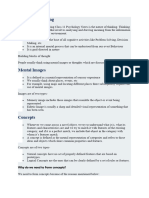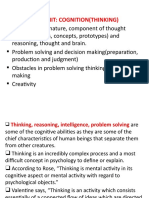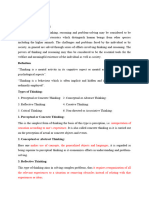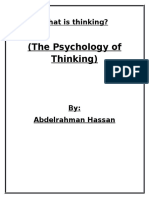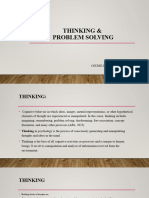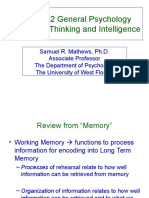0% found this document useful (0 votes)
76 views7 pagesClass XI Psychology: Thinking
Chapter 7 of the Psychology Class XI curriculum discusses the nature of thinking, its building blocks, and the processes involved in problem-solving, reasoning, and decision-making. It also explores creative thinking, barriers to creativity, and strategies to enhance creative thought, along with the relationship between thought and language development. The chapter highlights the stages of language development and theories on how language is acquired.
Uploaded by
zyeshakh2209Copyright
© © All Rights Reserved
We take content rights seriously. If you suspect this is your content, claim it here.
Available Formats
Download as DOCX, PDF, TXT or read online on Scribd
0% found this document useful (0 votes)
76 views7 pagesClass XI Psychology: Thinking
Chapter 7 of the Psychology Class XI curriculum discusses the nature of thinking, its building blocks, and the processes involved in problem-solving, reasoning, and decision-making. It also explores creative thinking, barriers to creativity, and strategies to enhance creative thought, along with the relationship between thought and language development. The chapter highlights the stages of language development and theories on how language is acquired.
Uploaded by
zyeshakh2209Copyright
© © All Rights Reserved
We take content rights seriously. If you suspect this is your content, claim it here.
Available Formats
Download as DOCX, PDF, TXT or read online on Scribd
/ 7

